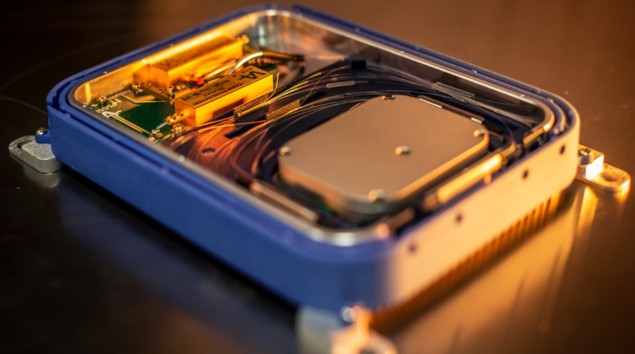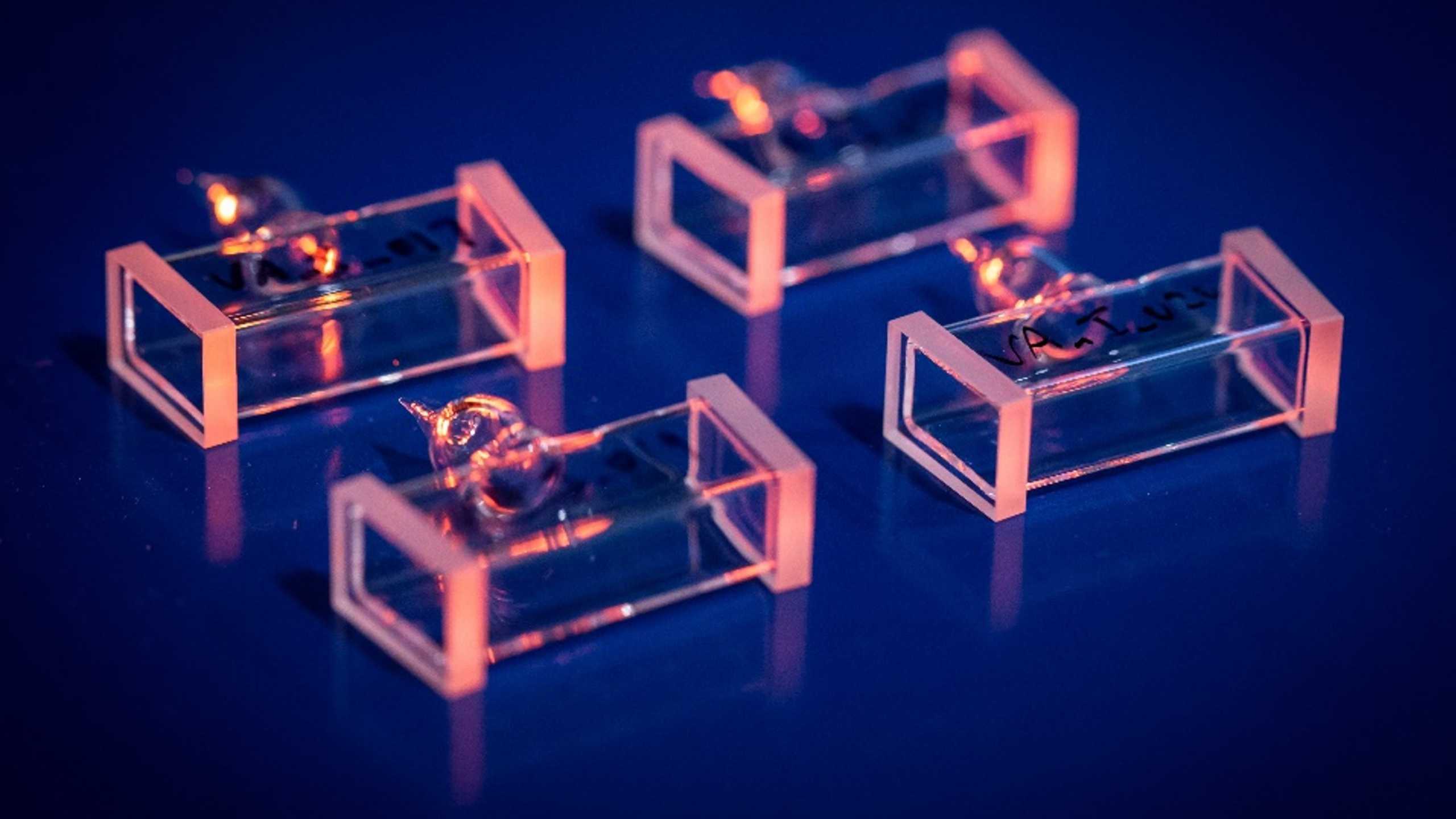
Atoms are the world’s most precise timekeepers – so much so that the second is defined as exactly 9 192 631 770 ticks of a caesium-based atomic clock. Commercially-available versions of these atomically precise clocks underpin GPS, navigation, data transfer and financial markets, and they run at microwave frequencies, or billions of tick-tocks per second. After a day, their timekeeping is out by less than ten nanoseconds.
As good as this is, though, the next generation of atomic clocks is even more precise. These lab-based constructions run at optical frequencies, meaning they tick tens of trillions of times per second. The best of them can remain precise to 10 femtoseconds (10-15 s) after a day, or within a second after 50 billion years. And soon, for the first time, you’ll be able to buy one of your very own: Vector Atomic, a start-up based in California, US, has put the first portable optical clock on the market.
“Today the only clocks you can buy are microwave clocks,” says Jonathan Hoffman, a programme manager at the US Defense Advanced Research Projects Agency (DARPA), which funded the work. “If you go to the optical transition, there’s a giant gain in precision, accuracy and performance, but it also typically comes with incredible complexity at the same time. Finding a happy compromise is the real battle.”
Finding the right atoms
The main difference between optical clocks and their microwave predecessors is lasers. To build the most precise clocks possible, scientists use the atoms that offer the narrowest atomic transitions – usually strontium or ytterbium – and design their laser systems around those atoms’ particular requirements. The atoms are kept in vacuum chambers, and different lasers are used to cool and trap them, while other lasers block undesirable transitions or interrogate the desired one used in the clock. All these lasers, up to a dozen total, need to be stabilized to precise frequencies, and maintaining them requires constant supervision.
To build a less precise, but more robust and portable, version of an optical clock, Vector Atomic CEO and co-founder Jamil Abo-Shaeer had to take a different approach. “Instead of designing the system around the atom, we designed the system around the lasers,” he says.

The toughest, most time-tested lasers in existence, Abo-Shaeer explains, are those used in telecommunications and industrial machining. Thanks to years (or even decades) of commercial R&D, they are extremely compact and stable, and he and his team chose an atomic species that suits them: molecular iodine. This molecule has convenient transitions near a frequency-doubled infrared laser commonly used in machining. The team also opted for a simple vapour-cell setup that avoids cooling the atoms to frigid temperatures or confining them in an ultrahigh vacuum.
The result was a turnkey optical clock, which the team call Evergreen, with a volume of just 30 litres – roughly the size of a record player. Although the precision of Evergreen’s timing is far from the lab-based state of the art, it is 100 times more precise than existing microwave clocks of a comparable size. It also matches the performance of clocks based on hydrogen masers – devices the size of walk-in fridges that are extremely sensitive to environmental noise.
Sea trials
In the summer of 2022, a prototype of Evergreen spent three weeks aboard a ship at sea for testing. During this time, the clock worked without any intervention. Upon return, the team tested the clock’s performance and found it had not significantly degraded, despite turbulence and temperature swings aboard ship. “When it happened, I thought everyone should be standing up and shouting from the rooftops,” Hoffman says. “I mean, people have been working on these optical clocks for decades. And this was the first time an optical clock ran on its own without human interference, out in the real world.”

According to Abo-Shaeer, Evergreen’s size and stability pave the way for widespread adoption of such clocks in navigation, especially when GPS signals are blocked or spoofed; in data centres and telecommunications protocols; and for synchronizing signals from remote detectors for scientific purposes. Currently, GPS is precise to about three metres, but more precise timing on satellites could bring that down to a few centimetres or less, allowing autonomous vehicles to stay in their lanes or delivery drones to land on a balcony. Being able to chop time up into smaller pieces should also allow for higher bandwidth communications, Abo-Shaeer adds.

Portable optical lattice clock measures elevation
Whether this particular clock is the one that will power the next generation of GPS and faster data transfer remains to be seen. But the technological advance is significant nonetheless, says Elizabeth Donley, the head of the US National Institute of Standards and Technology (NIST) time and frequency division in Boulder, Colorado. “There’s potentially a lot of other types of optical clocks that could come on the market over the next decade,” says Donley, who was not involved in Vector Atomic’s work. “The heart of this thing is an iodine vapour cell, but the infrastructure can be used for other types of clocks as well.”
